NORFOLK, Va. (WAVY) — As part of Fleet Forces Command’s Sailor for a Day program, WAVY was invited to get an inside look at how the U.S. Navy operates.
The U.S. Navy’s East Coast Aviation Water Survival Training Center is located at Naval Station Norfolk. Every four years, aircrews go through this training to ensure they know what to do in an emergency. Our version would be a little bit less than what they go through, but designed to give us an introductory taste of what it’s like.
Our instructor for the day, HM2 Sean Farrell says that training is part physical, part mental.
“We train them to keep a positive mental attitude — if you are panicked, you are worried that positive mental attitude is going to help get you through that time,” Farrell said.
After a brief lesson, I donned the gear — flight suit, helmet, boots, gloves and vest and got ready to get into the pool.
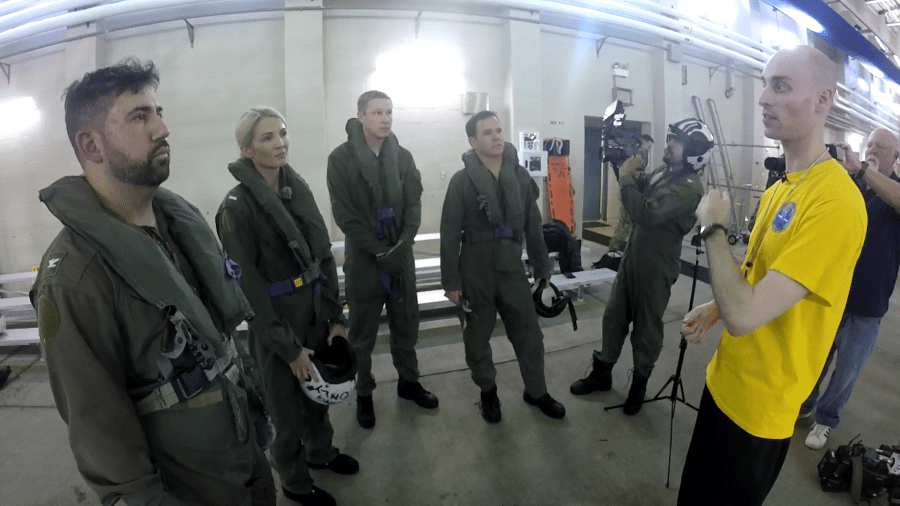
Our first task – swim in all of the gear from one side to another. A simple task at first glance, but a little more challenging when you consider all the gear we’re wearing.
Next up, it’s time to inflate our PFD — manually — while treading water and drown proofing. In drown-proofing, your body is relaxed and uses the natural buoyancy of your body, so that you’re using the least amount of energy while allowing you to still perform the tasks you need to do.
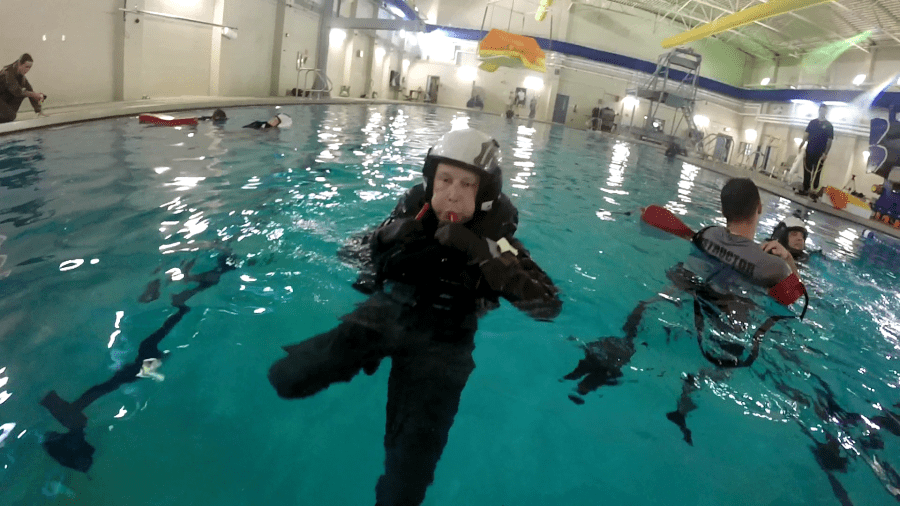
For the final part of our training, we also practiced underwater skills, like opening hatches and egress while upside down.
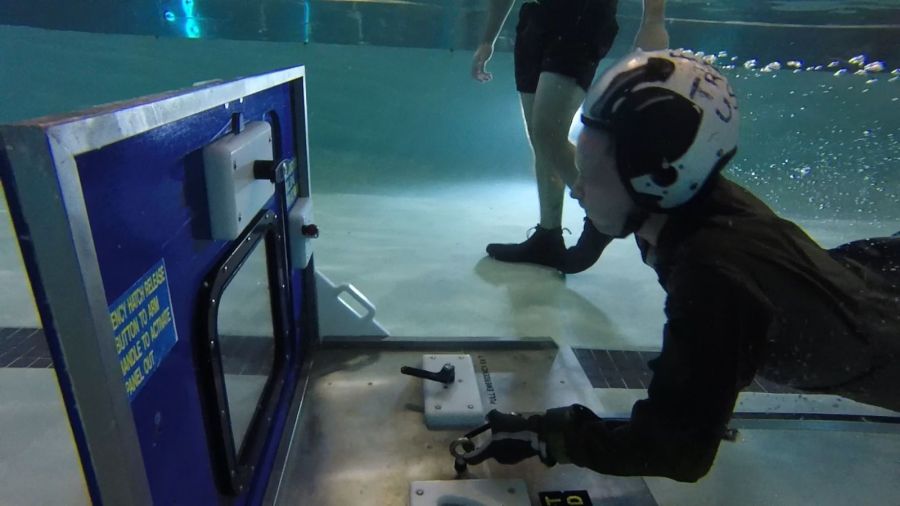
The training here is designed to build muscle memory, so that in a real emergency, you know what to do until search-and-rescue can reach you.
Next up for the day, a visit to one of the helicopter squadrons based here in Norfolk.
For our flight, we flew with HSC-2 — a MH-60S squadron tasked with training the next generation of pilots. HSC-2 is one of the last stops a naval aviator will make before they go to their mission in the fleet.
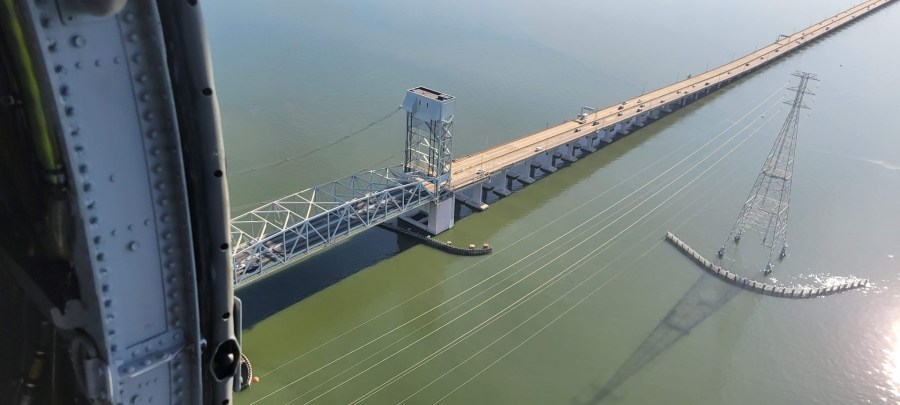
That mission is multi-faceted — from search and rescue to vertical replenishment to special warfare support, anti-surface warfare and humanitarian relief.
Our flight was to be a training exercise in search and rescue — after a quick flight up the river, we were dropped off in a field until the aircrew returned to “rescue” us.
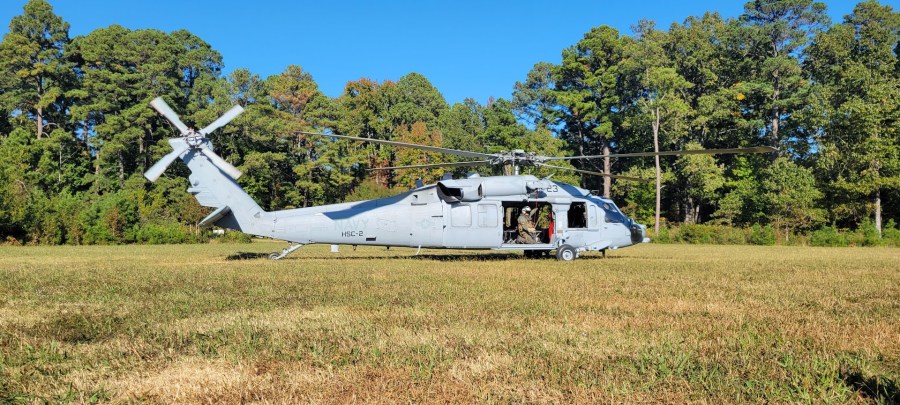
Lt. Joey Lion, an instructor with HSC-2, told us that the MH-60 is a crucial helicopter for the Navy.
“The MH-60 is the only Navy platform that can land on a cruiser or a destroyer,” Lion said. “So to keep those missions going, the Navy has to keep operating a fleet of MH 60s all the time. On top of that, you always have to have an aircraft ready for search-and-rescue. In the event that somebody were to eject or have some type of mishap, the MH-60 is always on station.”
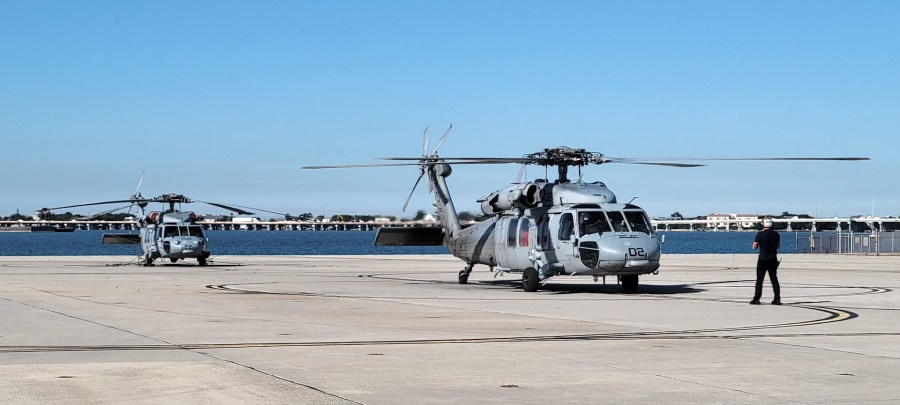
For Lion, being able to train these pilots and fly in an area he grew up in is a unique opportunity.
“I remember watching helicopters pass by when I was a little kid,” Lion said. And now being in the opposite role, that I see little kids when they are on the ground. You know, it’s it’s really surreal.”

























































